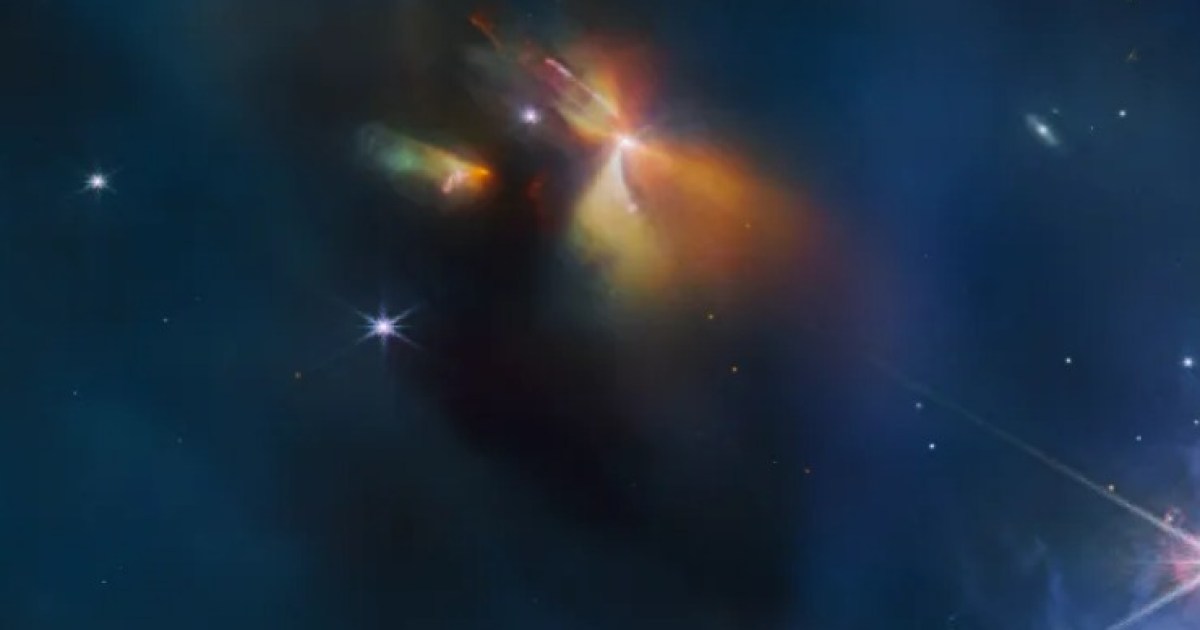A new image of the Herbig-Harrow object was captured The James Webb Space Telescope Shows the dramatic ejections of a young star. These flares are created when the stellar wind shoots in the opposite direction Birth Stars, the gas jets collide with nearby dust and gas at enormous speeds. These objects are large, several light-years in diameter, and shine brightly at infrared wavelengths where James Webb operates.
This image shows Herbig-Haro object HH 797, located near the star cluster IC 348, and close to another Herbig-Haro object recently captured by Webb: HH 211.
The image was taken using Webb’s Near Infrared Camera (NIRCAM) instrument, which Webb scientists explain is well-suited for probing young stars. liberation: «Infrared imaging is a powerful way to study newborn stars and their outflows, because the youngest stars are still embedded in the gas and dust from which they formed. The star’s outgoing infrared emission penetrates the hidden gas and dust, making Herbic-Harrow objects suitable for observation by the Webb’s sensitive infrared instruments.
“Molecules excited by turbulent conditions, including molecular hydrogen and carbon monoxide, emit infrared light that Webb can collect to visualize the exiting structure. “The NIRCam excels at observing hot molecules (thousands of degrees Celsius) excited as a result of collisions.”
This particular Herbic-Harrow object is so unusual that scientists originally believed it formed from a young star. But these detailed observations show that there are actually two sets of outflows coming from a pair of stars at the center.
In addition to the bright ripples of Herbic-Harrow material in the lower half of the image, more new stars are thought to be born in the upper half of the image. The bright yellow and green spot is believed to host two young protostars.
Author’s recommendations





